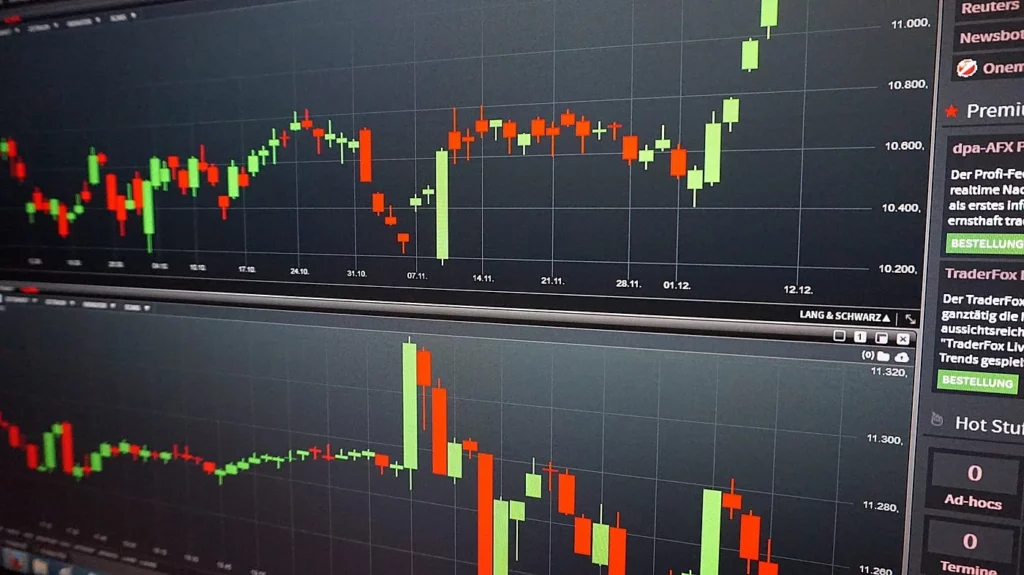
Introduction
Day trading is a short-term trading strategy that entails purchasing and selling financial assets on the same day in an effort to capitalise on rapid price movements. A strategy known as day trading is frequently applied to highly liquid assets such as stocks, currencies, options, and futures. Examining price charts and locating trade chances with the aid of technical indicators are both included. This quick-paced technique necessitates continuous attention, risk management expertise, and emotional restraint because traders must react swiftly to market moves. Day trading carries a high level of risk, and inexperienced traders who are unprepared could sustain significant losses despite the potential for quick gains. People who are interested in day trading need to do their research, be cautious when engaging in the activity, and have a strategy in place.
Basics of Day Trading – Definition
Buying or selling stocks on the same day is referred to as day trading or intraday trading. Day traders can choose to buy first and sell later, or the opposite. When the market is rising, they purchase, and when it is falling, they sell. In the stock, currency, and F&O (Futures and Options) markets, day trading is frequently highly popular. On the stock market, day traders look for liquid, incredibly volatile momentum equities and decide when to enter and exit.
Day traders frequently employ a lot of leverage. Leverage can greatly increase their profit margin, but if the business doesn’t work out as expected, it can also result in a sizable financial burden.
On the stock market, there are three basic kinds of traders: fundamental, technical, and news-based. Fundamental day traders look for opportunities using fundamental research, including price-earnings, beta, book value, balance sheet, etc. Technical day traders use indicators like the MACD, Bollinger Band, RSI, and others to analyze a stock’s momentum and place exact bets. The equities that are most likely to be impacted by the day’s most important news are also traded by news-based day traders after reading or listening to it. Macroeconomic data, business profitability, sectoral news, interest rates, and market mood in general are all things that news-based traders keep an eye on.
Changes in the stock market are brought on by the collective emotions of traders and investors. For instance, whereas some traders might spot an opportunity and invest heavily, others would spot a threat and withdraw their money. As a result of the unpredictable volatility of stock prices, day traders seek to make money.
Top Strategies Employed by Day Trading Beginners
Different day trading strategies are used by both inexperienced and seasoned traders to make money. The primary methods day traders employ to trade equities profitably are listed below:
- Identifying the market trend and riding the waves are both parts of momentum trading. A market trend may be upward, downward, or sideways.
- The practice of making several very rapid trades and then collecting the profits is known as scalping.
- Range trading is a method of deciding when to enter and quit a transaction by identifying levels of support and resistance. It is usual practice to use the Fibonacci Retracement level indicator to define support and resistance lines.
- High-Frequency Trading (HFT) – HFT automatically executes trades while keeping an eye on price changes using an automated computer-based trading system.
Benefits of Day Trading
- Profiting from quick price movements and possibly turning a profit in just one trading day are both possible with day trading.
- No Overnight Risk: Because day traders settle their positions at the end of the day, they minimize their exposure to overnight market risks like earnings announcements or geopolitical developments.
- Increased Liquidity: To enable quick entry and exit from positions without too much price slippage, day traders focus on highly liquid assets.
- Flexibility: Because day trading may be done as a full-time or part-time endeavour, it gives traders the opportunity to manage their time and obligations.
- Lower Margin Requirements: Some brokers have lower margin requirements, allowing day traders to hold greater positions with less capital.
- Frequent Trading Opportunities: In active markets, day traders may find a variety of trading opportunities throughout the day, increasing their chances of discovering profitable setups.
- Day traders get immediate feedback on their trades, allowing them to quickly analyze and tweak their tactics.
- Emotional Control: Day trading necessitates self-discipline and emotional control, which can promote personal growth and better judgement.
- Reduced Exposure to Market Events: Day traders are protected from the risk of large price gaps that could develop between trading days by completing positions before the market closes.
FOR MORE INFO CLICK THIS SITE:https://learningsharks.in/
FOLLOW OUR PAGE:https://www.instagram.com/learningsharks/?hl=en
















